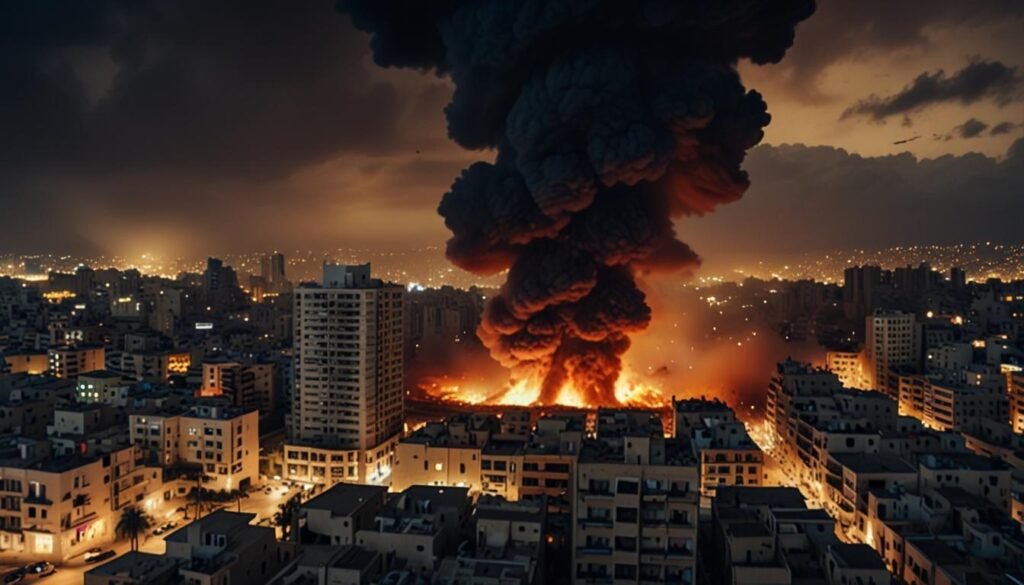The rise of AI-generated videos poses a significant challenge to accurate reporting, as seen in a recent montage of Israeli airstrikes in Beirut that blended real footage with digitally fabricated imagery.
The emergence and distribution of AI-generated deepfake videos have stirred attention and concern, particularly in conflict zones. Recently, a video montage showing airstrikes in Beirut circulated online, with a portion of the footage being attributed to artificial intelligence. Posted to social media platform X on Sunday night, the video claimed to depict the intense bombardment of Beirut, Lebanon, by Israeli forces, a segment of which was later confirmed to be AI-generated.
The original AI-generated video was shared on TikTok by a user with the handle @digital.n0mad, who identifies as an AI artist. The video was tagged as being located in Beirut and included a disclaimer noting its AI-origin. This same user has a history of posting digitally fabricated videos, often designed to appear sensational or dramatic.
Significantly, the video in question contained certain telltale signs of its artificial origin. Observers noted unusual details that distinguished it from real footage, such as the abnormal speed of vehicle traffic compared to the stationary fires, and a melting effect of a mound adjacent to two large towers. Additionally, the structural inconsistencies like a disconnect in the roofline of a large building further indicated fabrication.
However, the latter part of the montage did include authentic footage of Israeli airstrikes near Beirut’s international airport, recorded on the evening before the video was shared. This real footage was sourced from Lebanese TV network Al Jadeed and has been independently verified by CBS News.
The video, including its AI-generated segment, was shared by several high-profile accounts. Notably, Rula Jebreal, an analyst and lecturer at the University of Miami, shared the clip with her over 207,000 followers. Furthermore, the Council on American-Islamic Relations (CAIR), an advocacy group headquartered in Washington, D.C., also posted the video before later removing it. While CAIR did not explain the rationale behind sharing the clip, they clarified that only the initial segment involved AI imagery, with the remainder being real footage of Israel’s airstrikes.
In context, the significance of this video stems from the heightened tensions and ongoing conflict between Israel and Hezbollah, with Israel intensifying its military actions in Lebanon over the past fortnight. Authentic videos have been verified by CBS News, showing widespread devastation, intense firefighting, and a populace in distress. Over 2,000 fatalities have been reported by Lebanon’s health ministry. Moreover, the humanitarian toll is considerable, as highlighted by the United Nations High Commissioner for Refugees, Filippo Grandi. During a visit to Lebanon on Sunday, Grandi revealed that over a million residents have been displaced due to the conflict.
The incident involving the AI-generated video underscores the challenges posed by digital misinformation, particularly in conflict zones where the need for accurate reporting is critical. Although misleading, the use of AI in this context did not alter the overarching narrative of turmoil in Beirut under Israeli bombardment; yet, it serves as a stark reminder of the complexities introduced by emerging technologies in the dissemination of news and imagery in today’s digital age.
Source: Noah Wire Services


